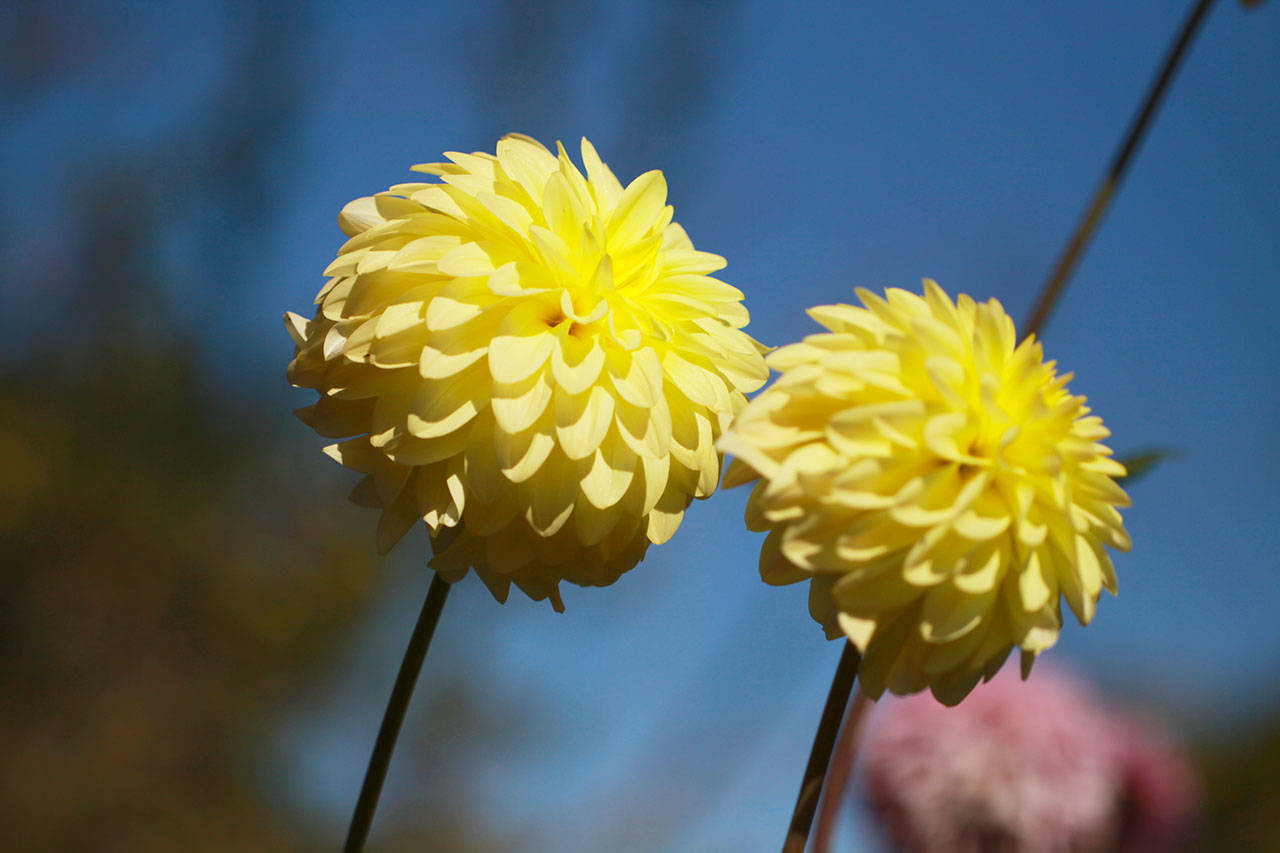By Gary McLaughlin
For the Sequim Gazette
There are several good reasons to grow dahlias. One of them is the amazing number of varieties and cultivars of dahlias available to the home gardener.
According to the American Dahlia Society (ADS), selection is the first step to consider when growing these impressive flowers. The ADS lists more than 10,500 cultivars and classifies dahlias in three ways: by the size, form and color of the flower.
The sizes of dahlia flowers are sorted into six categories, ranging from the very large (taller than 10 inches — often referred to as dinnerplate dahlias) to the small (4-6 inches) to the very small (2 inches or less). The height of a dahlia plant has no bearing on the flower size.
For most dahlias it takes about 90 days from planting to flowering. The dahlias with the largest flowers can take up to 120 days, while those with the smallest flowers can bloom in 70 days.
For dahlias, small is good. Over a fourth of those 10,500-plus dahlia cultivars carry the BB (small) size designation for flowers in the 4-6 inches range. Within that size group there is more to choose from in form and color in different dahlia cultivars than there is in the other size groups.
One dahlia in this group was introduced by Lee Bowen of Sequim. “Zookeeper’s Giraffe” is a small informal decorative dahlia with a variegated color pattern. You can see this particular cultivar at the terrace garden in Carrie Blake Community Park.
Another advantage to the small dahlias is the different and sometimes subtle variations in color on flowers. Many, with more than one color, can be much more attractive than similar colors on larger dahlias.
There are 17 different forms of the dahlia flower. Form mostly refers to the shape and arrangement of the petals on the flower. Six of these forms — formal decorative, informal decorative, straight cactus, semi-cactus, incurved cactus and laciniated — always have a size designation as part of their identification.
The other 11 forms are all smaller than 4 inches. Waterlily and collarette dahlias are two of these forms that many find especially attractive.
A good place to see what the different dahlia forms look like is in one of the online catalogs of some commercial dahlia growers: Swan Island from Canby, Ore.; Dan’s Dahlias in Oakville, Wa., and Jan’s Country Garden east of Port Angeles.
There are 15 different color designations. Ten of these refer to specific colors. The other five refer to different ways that flowers can show more than one color. About a third of all dahlia cultivars feature more than one color in the flower.
There can be some interesting variations in color on the same plant. One formal decorative dahlia that grows in the Master Gardener’s Woodcock Demonstration Garden (at 2711 Woodcock Road, Sequim) is “Tomo,” a bi-color (two contrasting distinct colors) with white and dark pink.
Some flowers can be dark pink with white tips, while other dahlia blossoms can have about the same amount of each color.
Interesting fact, the ADS lists 19 different dahlias with “blue” in their name. But none of them are blue, because there are no blue dahlias.
Dahlias are all about variety. When they begin appearing after other summer flowers may have lost their charm, dahlias liven up our yards and gardens with flowers that please us in many ways.
For more on varieties, selection and cultivation be sure to look at the ADS website found at dahlia.org.
Gary McLaughlin is a WSU-certified Master Gardener. He is the area manager for the dahlia garden at the Master Gardener’s Woodcock Demonstration Garden.



